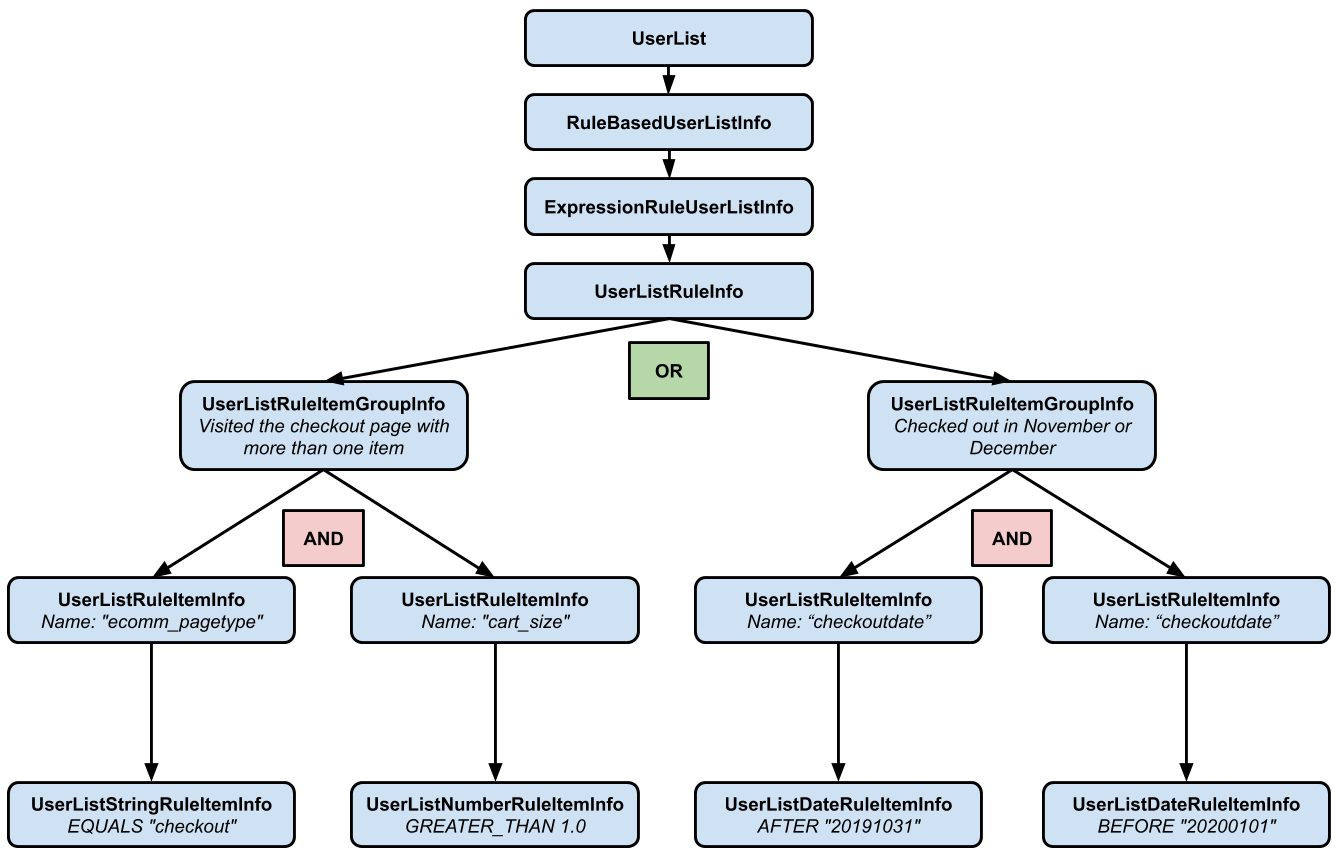Say you have a site where you've configured several custom remarketing tag parameters to capture the following attributes of users:
event- The category of page on your site, such as checkout, cart, etc.cartsize- The number of items in a user's shopping cart.checkoutdate- The date on which a user checked out. You only set this parameter when a user has actually completed a purchase.
You're interested in showing more impressions to users who have placed multiple items in their shopping carts and initiated the checkout process. You also want to find users who have made a purchase during November and December because you plan to have a big sale on your site during those months.
You can describe this set of users with either of the following rules:
- Users who visited the checkout page and had more than one item in their cart.
- Users who checked out during the months of November or December.
If a user falls into either category 1 or category 2, you want to increase your bids in specific ad groups or campaigns by 25%.
Objects
Take a look at the structure of a rule-based user list. A rule-based list is
represented in the Google Ads API as a
rule_based_user_list.
The following diagram shows what the
rule_based_user_list for this
use case will look like when we're done.

